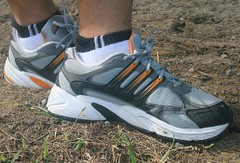
The figure above shows PERISTALSIS. I have an urgent need to blog about this because there were misconceptions concerning it based on some students' responses in the previous test. Here are some of the misconceptions:
- Circular and longitudinal muscles contract or relax at the same time
- Some students used circular or longitudinal tissues instead of muscles
- Some students were not aware about the role of peristalsis in digestion
Here's the definition of PERISTALSIS:
It is the ALTERNATE contraction and relaxation of the circular and longitudinal muscles causing bolus to be pushed down and also at the same time to be physically digested.
In the recent test, many students failed to include ALTERNATE. It is very important to do so because it shows that you understand that these muscles are actually working antagonistically (that is, when one set of muscles relaxes the other set contracts - for example when the circular muscles relax, the longitudinal muscles contract). Now, it should be understood that without ALTERNATE in your definition, the meaning could be misleading. It can be assumed that both set of muscles are actually contracting or relaxing at the same time.
Students should also be aware about the role of PERISTALSIS. One is to move bolus down along the alimentary canal and the second function is to break the bolus down into smaller pieces without changing them chemically (this is a kind of PHYSICAL digestion).
And lastly..... where is PERISTALSIS occurring?
Not only the oesophagus but actually along the alimentary canal......
It is the ALTERNATE contraction and relaxation of the circular and longitudinal muscles causing bolus to be pushed down and also at the same time to be physically digested.
In the recent test, many students failed to include ALTERNATE. It is very important to do so because it shows that you understand that these muscles are actually working antagonistically (that is, when one set of muscles relaxes the other set contracts - for example when the circular muscles relax, the longitudinal muscles contract). Now, it should be understood that without ALTERNATE in your definition, the meaning could be misleading. It can be assumed that both set of muscles are actually contracting or relaxing at the same time.
Students should also be aware about the role of PERISTALSIS. One is to move bolus down along the alimentary canal and the second function is to break the bolus down into smaller pieces without changing them chemically (this is a kind of PHYSICAL digestion).
And lastly..... where is PERISTALSIS occurring?
Not only the oesophagus but actually along the alimentary canal......
